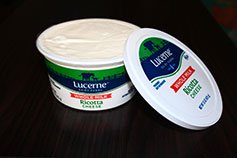
Ricotta Cheese
Coming Soon...
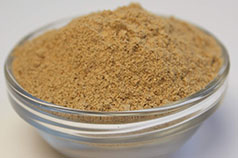
Cardamom Powder
Coming Soon...
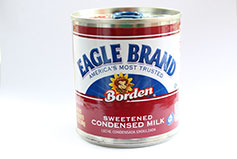
Sweetened Condensed Milk
Humans learned to consume other animals’ milk when they started domesticating the animals for meat and skins. It was discovered later that the domestic animals can be used for getting milk too. (Humans started drinking other animals’ milk sometime between 9000 - 8000 BC.)
Gradually, humans discovered that milk can be transformed into different forms, such as butter, yogurt, and cheese. Later, they became more skilled and started collecting greater quantities of milk and found new ways to concentrate and preserve its nourishment.
The milk that we use for cooking, including Sweetened Condensed Milk, serves primarily as a source of moisture, and adds flavor and body to the food. Sugar in the milk encourages browning while salts contribute to protein coagulation.
Sweetened condensed milk contains concentrated protein and sugar, which help it caramelize at temperatures as low as boiling point of water. This makes it a favorite shortcut to creamy caramel sauce and base for cooking several desserts.
It’s a common practice to put the can in a pot of boiling water or a warm oven and let it brown inside, which is potentially dangerous. Since any trapped air in the can will expand on heating and may cause the can to burst open. It’s safer to empty the can into an open utensil and then heat it on the stovetop, in the oven, or in the microwave.
You can find sweetened condensed milk at any grocery store, or buy it online at amazon.com. You can also look for other online resources for more options.
Gradually, humans discovered that milk can be transformed into different forms, such as butter, yogurt, and cheese. Later, they became more skilled and started collecting greater quantities of milk and found new ways to concentrate and preserve its nourishment.
The milk that we use for cooking, including Sweetened Condensed Milk, serves primarily as a source of moisture, and adds flavor and body to the food. Sugar in the milk encourages browning while salts contribute to protein coagulation.
Sweetened condensed milk contains concentrated protein and sugar, which help it caramelize at temperatures as low as boiling point of water. This makes it a favorite shortcut to creamy caramel sauce and base for cooking several desserts.
It’s a common practice to put the can in a pot of boiling water or a warm oven and let it brown inside, which is potentially dangerous. Since any trapped air in the can will expand on heating and may cause the can to burst open. It’s safer to empty the can into an open utensil and then heat it on the stovetop, in the oven, or in the microwave.
You can find sweetened condensed milk at any grocery store, or buy it online at amazon.com. You can also look for other online resources for more options.
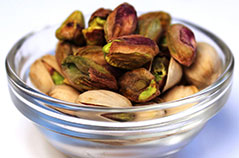
Pistachios
Coming Soon...
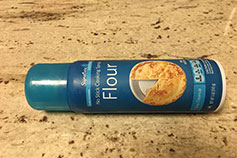
Non-stick cooking spray

Sugar
Coming Soon...
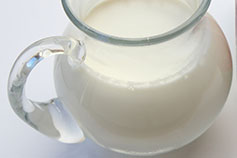
Whole Milk
Whole milk is least adulterated and is very much similar to the way it comes from cow or other dairy farm animals. It is intact and the components like fat and water are not removed. It contains 3.4% fat and 87% water in addition to proteins and enzymes, vitamins and minerals, and carbohydrates.
The flavor of fresh milk is balanced and mild. The lactose in the milk makes it sweet and the minerals make it slightly salty and very slightly acidic. Its mild and pleasant aroma is due short-chain fatty acids that keep the highly saturated milk fat fluid at room temperature, and the short-chain fatty acids reach our nose when evaporated.
The basic flavor of milk is affected by the animals’ feed and microbial activity in the cow’s rumen (first part of stomach). Pasteurization also slightly modifies the fresh flavor of milk. Flavor of milk deteriorates due to oxidation by contact with oxygen or exposure to strong light.
Milk is a rich source of many essential body-building nutrients, particularly proteins, sugars, and fat, vitamin A and B vitamins, and calcium. It is always safe to buy milk with USDA Organic seal to make sure that the dairy farm animal is not treated with drugs including growth hormones. The animals are allowed to gaze and fed organic fodder.
The flavor of fresh milk is balanced and mild. The lactose in the milk makes it sweet and the minerals make it slightly salty and very slightly acidic. Its mild and pleasant aroma is due short-chain fatty acids that keep the highly saturated milk fat fluid at room temperature, and the short-chain fatty acids reach our nose when evaporated.
The basic flavor of milk is affected by the animals’ feed and microbial activity in the cow’s rumen (first part of stomach). Pasteurization also slightly modifies the fresh flavor of milk. Flavor of milk deteriorates due to oxidation by contact with oxygen or exposure to strong light.
Milk is a rich source of many essential body-building nutrients, particularly proteins, sugars, and fat, vitamin A and B vitamins, and calcium. It is always safe to buy milk with USDA Organic seal to make sure that the dairy farm animal is not treated with drugs including growth hormones. The animals are allowed to gaze and fed organic fodder.

Almonds
Coming Soon...

Saffron
Coming soon...

Water
Coming Soon...
Share your thoughts and questions!


